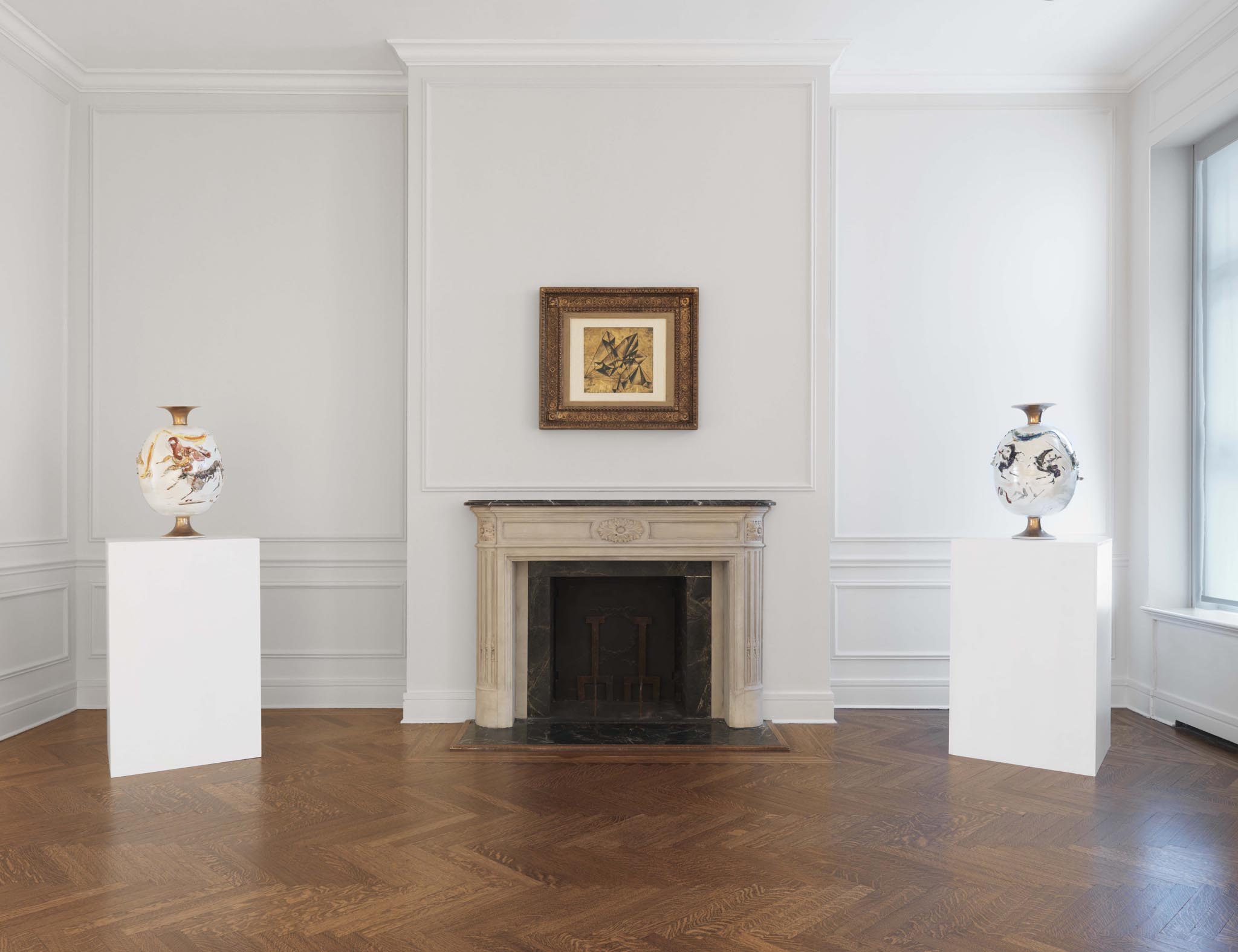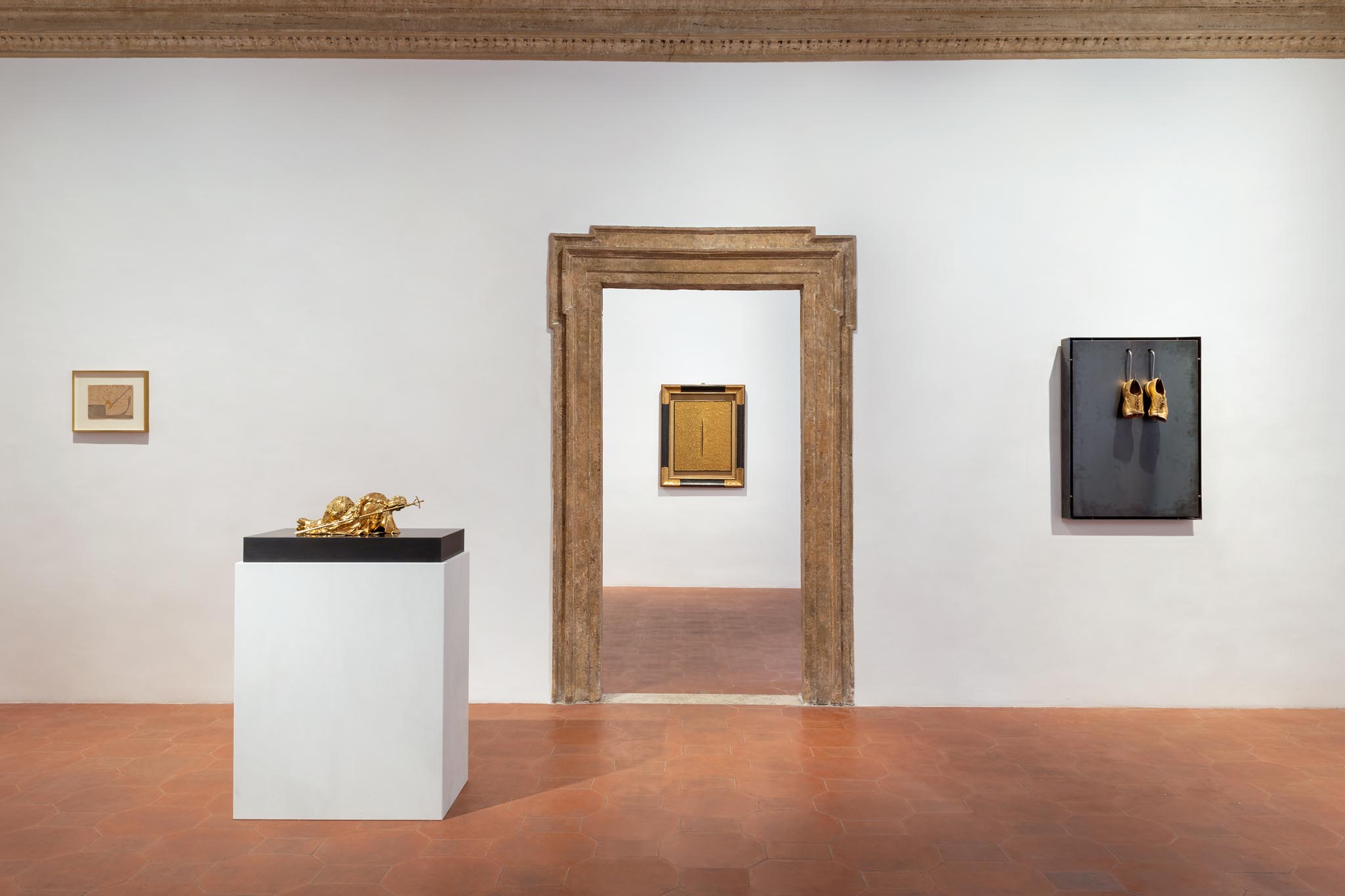In 1944 Carla Accardi (Trapani, 1924 – Rome, 2014) enrolled at the Academy of Fine Arts in Palermo, Sicily, where she met fellow student and future life partner, Antonio Sanfilippo. In 1946, after a brief period at the Academy of Fine Arts in Florence, Accardi and Sanfilippo moved to Rome. There, they met artists Pietro Consagra and Giulio Turcato — an encounter that led to a study trip to Paris the same year, along with artists Ugo Attardi and Alfiero Maugeri.
In 1947, Accardi created her first abstract painting, Scomposizione, and joined forces with Attardi, Consagra, Piero Dorazio, Giovanni Guerrini, Achille Perilli, Sanfilippo, and Turcato to found the Forma 1 group, which published a single issue of its manifesto magazine, Forma 1.
From 1948 onward, Carla Accardi began to exhibit her works in group shows, both in Italy and abroad. That same year, she debuted at the 24th edition of the Venice Biennale and participated in the Abstract Art exhibition at the Art Club of Rome. Her first solo shows followed in 1950, at Galleria Numero in Florence and Libreria l’Age d’Or in Rome.
During this period, Accardi was actively involved in key exhibitions dedicated to young Italian abstract artists, organized by the Art Club, including Arte d’Oggi at Palazzo Strozzi in Florence and Arte concreta e astratta in Italia at the Galleria Nazionale d’Arte Moderna in Rome.
Until 1952, Accardi’s work was grounded in Concrete Painting, influenced by developments in Paris. In 1953, however, she shifted toward “sign painting”, evolving her style to incorporate symbolic forms and a more earthy color palette. This transition is exemplified in works such as the series Animali Immaginari (1953).
A pivotal moment came in 1954, when she met the influential French critic Michel Tapié, who positioned her as a central figure in his theory of l’art autre (“art of the other”). Between 1954 and 1959, he featured her work in several key exhibitions, including Individualités d’aujourd’hui (1955) and Structures en devenir (1956). Important solo shows ensued, including one at the Stadler Gallery in Paris (1956) and another at Galleria Notizie in Turin (1959).
Among her notable group exhibitions during this period were the 1957 show on the Isola Tiberina in Rome, organized by the Rome – New York Art Foundation and curated by Frances McCann, and her solo presentation at Galleria La Salita in 1959.
By the late 1950s, Accardi had reached her full artistic maturity and established herself as a prominent figure in international sign painting. The 1960s ushered in further stylistic evolution: her forms became more dynamic, and her color palette grew increasingly vibrant. Her first highly chromatic works were shown in 1961 at the Parma Gallery in New York and the New Vision Centre Gallery in London.
In 1964, she was invited once again to the Venice Biennale, where she was given a solo room at the 32nd edition. Around this time, Accardi began experimenting with sicofoil, a transparent plastic material previously unused in art. This innovation led to the creation of works such as Tenda (1965), Ambiente Arancio (1967), and Triplice Tenda (1969–71).
Her exploration of sicofoil continued into the 1970s, with a gradual shift toward lighter, sometimes pastel tones. By the mid-1970s, she began overlaying sicofoil with woven elements, drawing attention to the frame itself. In 1976, she returned to the Venice Biennale (37th edition) with her masterpiece Triplice Tenda.
The 1980s marked yet another transformation. Accardi returned to canvas — often raw and untreated — imbuing it with bold, expansive signs, where a single vibrant color might dominate the composition. From this point onward, she exhibited continuously. In 1983, her work was featured at the Pinacoteca Comunale in Ravenna and at the Pavilion of Contemporary Art in Milan. In 1987, she returned to the Venice Biennale, where an entire room was again dedicated to her work. The following year, several of her pieces were included in the landmark exhibition Italian Art in the 20th Century at the Royal Academy of Arts in London.
In 1994, Castello di Rivoli held a major retrospective. That same year, she took part in The Italian Metamorphosis 1943–1968, at the Guggenheim Museum in New York. The 2000s opened with two important anthological exhibitions: at the Musée d’Art Moderne de la Ville de Paris (2002) and the MACRO in Rome (2004). In 2009, a selection of works by Accardi and Lucio Fontana were shown at the Sperone Westwater Gallery in New York. In 2011, the Puglisi Foundation in Catania hosted the exhibition Carla Accardi: Segno e trasparenza.
Carla Accardi passed away in Rome in early 2014. Her works are preserved in several major Italian institutions, including the Galleria Nazionale d’Arte Moderna in Rome, MART in Rovereto, MAMbo in Bologna, the Castello di Rivoli Museum of Contemporary Art, and the Royal Palace of Milan.

